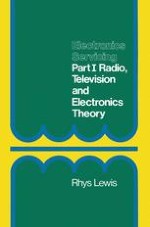1981 | Buch
Electronics Servicing
Part 1 Radio, Television and Electronics Theory City and Guilds of London Institute Course 224
verfasst von: Rhys Lewis, B.Sc.Tech., C.Eng., M.I.E.E.
Verlag: Macmillan Education UK
Enthalten in: Professional Book Archive
